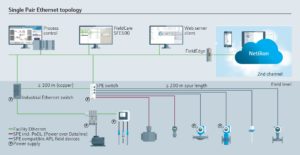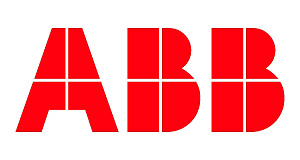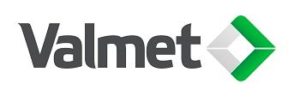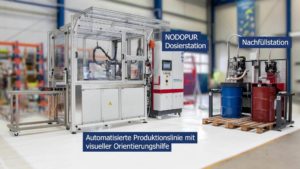ABB Posts Results
ABB's 2005 net income reached $735 million compared to a $35-million loss in 2004, with strong increases in orders, revenues and EBIT. Continuing market strength and further operational improvements in the fourth quarter of 2005 contributed to the strong result.
"We have successfully moved into a phase of profitable organic growth," said Fred Kindle, ABB President and CEO. "Our market-leading positions led to a significant increase in orders and revenues, and further operational improvements contributed to a strong increase in EBIT.
"We met our original 2005 targets which, in view of the special charges throughout the year, is a solid achievement. A strong second half of 2005 has given us a good basis now to enter 2006 and generate further profitable growth," Kindle said.
The Power Technologies division reported a 64-percent increase in EBIT in the fourth quarter, in spite of $43 million in charges related to the previously announced transformer consolidation program. The Automation Technologies division increased EBIT by 25 percent in the quarter, reflecting further operational improvements. Positive EBIT in Non-core activities and lower Corporate costs also contributed to the profit improvement for both the quarter and the full year, and helped the company meet its 2005 targets.
Net income was $222 million in the fourth quarter, despite a $72-million expense in discontinued operations for the revaluation of ABB shares reserved to cover part of the company's asbestos liabilities. Cash flow from operating activities topped $1 billion for the full year, even after a negative impact of approximately $600 million resulting from reduced securitization and from discretionary pension contributions.
ABB cut net debt to approximately $500 million at December 31, 2005, from more than $1 billion at the end of 2004. ABB also reduced its unfunded pension liabilities by approximately $600 million, to $839 million at the end of December, and its outstanding securitization by $600 million, to $320 million.
Fourth-quarter market overview
Most of ABB's end markets remained robust in the fourth quarter of 2005. In the power sector, utilities in Asia and the Middle East continued to support high levels of economic expansion with investments in power transmission and distribution (T&D) infrastructure. In Europe and the Americas, T&D investments were aimed mainly at replacing aging infrastructure and improving the performance and reliability of existing grids.
In the automation-related sectors, demand growth was strongest in the minerals and mining and marine industries. Investments in the pulp and paper industry increased from very low levels in the U.S. Overall, customer spending in North America and western Europe was aimed mainly at improving the performance of existing assets, while customers in Asia and the Middle East invested in new production capacity. Demand for robotics solutions in the automotive sector softened in North America and Europe but increased in Asia. The construction market remained weak in most of Europe.
Summary of full-year 2005 results
For the full year 2005, orders received increased 9 percent (local currencies: 8 percent). For the two divisions, combined orders received rose 14 percent (local currencies: 13 percent) as demand grew across most of ABB's customer segments, especially in the second half of the year. The improvement was driven by a 12-percent increase in base orders (local currencies: up 10 percent) that more than offset a decrease in large orders.
Regionally, 2005 orders grew 19 percent in the Americas (local currencies: 15 percent) as a result of a recovery in demand for power systems and equipment, especially in the U.S., and as industrial growth continued in both North and South America. Orders in Asia increased 16 percent (local currencies: 14 percent), reflecting the ongoing investments in power and industry infrastructure to support robust economic growth. In Europe, orders were flat in 2005 in both dollar and local currency terms compared to 2004. Modest growth in western Europe offset a decrease in eastern Europe, caused mainly by a reduction in large projects. Orders from the Middle East and Africa increased 31 percent (local currencies: 30 percent), driven largely by the growing need for power and automation products and systems to support expansion in the oil and gas sector.
Revenues grew 9 percent (local currencies: 8 percent). For the two divisions, full-year revenues increased 12 percent (local currencies: 10 percent), reflecting primarily the strong order backlog, as well as success in the second half of the year in adjusting prices in transformers to offset the rapid increase in raw materials costs at the end of 2004 and the beginning of 2005.
EBIT for the full year amounted to $1,742 million, an increase of 67 percent compared to the year before. Contributing to the improvement were productivity benefits from earlier cost-reduction programs, higher factory loadings, improved project execution, lower Corporate costs and a return to profit in Non-core activities. As a result, the company achieved an attractive return on capital employed of 14 percent.
The loss in Discontinued operations amounted to $143 million, of which $123 million resulted from the mark-to-market treatment of the asbestos shares.
Net income in 2005 rose to $735 million following a loss in 2004 of $35 million. The net income margin in 2005 was 3.3 percent, including a negative impact of 0.5 percentage points from the mark-to-market accounting treatment of the ABB shares reserved for asbestos liabilities.
Cash flow from operating activities amounted to $1,012 million compared to $902 million in 2004. The 2005 amount includes a negative impact of approximately $500 million from reduced securitization activities and approximately $130 million from higher discretionary pension funding. Free cash flow for 2005 was $902 million, resulting in a cash conversion ratio (free cash flow as a share of net income) of 123 percent.
Balance sheet
Net debt (total debt less cash and marketable securities) was $508 million at the end of the fourth quarter of 2005, compared to approximately $1.1 billion at the end of 2004 and $886 million at the end of the third quarter of 2005. Positive cash flows in the fourth quarter, despite the negative impact of reduced securitization activities and higher discretionary pension contributions, were the main contributors to the lower net debt.
Gearing, defined as total debt divided by total debt plus stockholders' equity (including minority interest) decreased to 52 percent at the end of December 2005, versus 63 percent at the end of 2004.
Pension liabilities
In line with ABB's strategy to reduce total financial obligations, additional discretionary pension contributions of approximately $400 million were made in 2005 to local pension funds that were not required to be funded under local laws. This and a number of other factors allowed ABB to reduce its unfunded pension liability to $839 million at the end of December 2005 from $1,451 million at the end of 2004.
Dividend
For the first time since fiscal year 2000, ABB's Board of Directors has proposed a dividend for 2005 of CHF 0.12 per share. Translated into U.S. dollars using year-end 2005 exchange rates, the dividend corresponds to approximately 26 percent of ABB's 2005 net income. The proposal is subject to approval by shareholders at the company's annual general meeting, scheduled for May 4, 2006, in Zurich, Switzerland. Should the proposal be approved, the ex-dividend date would be May 9, 2006.
Asbestos
ABB announced on February 9, 2006, that a U.S. District Court judge set the hearing for the revised Plan of Reorganization for Combustion Engineering (CE), an ABB subsidiary in the U.S., for February 28, 2006. The judge indicated that, if no objections were filed by February 21, 2006, he intended to issue a confirmation order on February 28 for the plan, which is aimed at settling CE's asbestos liabilities. The judge's decision would be followed by a 30-day appeals period, after which – assuming no appeals were filed – the plan could be made effective.
The consolidated provision at December 31, 2005, related to asbestos matters in the U.S. was $1,128 million, a net increase of $105 million from December 31, 2004. The increase is due to the revaluation of ABB shares reserved to cover asbestos liabilities.
In September 2005, claimants to a parallel asbestos-related Plan of Reorganization for another U.S. subsidiary, ABB Lummus Global Inc., voted 96 percent in favor of the Lummus plan. That plan has not yet been filed with the Bankruptcy Court for review.
Revised divisional structure effective January 1, 2006
On September 6, 2005, ABB published performance targets for the period 2005 to 2009 and announced a revised divisional structure, which took effect on January 1, 2006. The resulting changes to the company's executive management are described in Appendix II of this press release. The company will begin reporting under the new divisional structure on April 27, 2006, starting with the first-quarter 2006 results. A supplemental report of estimated revenues and earnings before interest and taxes for the new divisions, covering the full years 2004 and 2005, is presented in Appendix II of this press release.
Outlook for 2006
The trading environment for ABB in 2006 is not expected to vary significantly from that seen in 2005. Demand for power transmission and distribution infrastructure is expected to continue growing in Asia, the Middle East and the Americas. Equipment replacement and improved network efficiency and reliability are forecast to be the drivers of higher demand in Europe and North America. The company believes the U.S. Energy Bill and European Union regional interconnection projects will have a positive impact, mainly in 2007 and beyond.
Automation-related industrial investments are expected to continue in most sectors, notably metals and minerals, marine and oil and gas. If oil prices remain at current levels, ABB expects further investments to expand both production and refining activities, as well as the power infrastructure and marine shipping needed to support that expansion. Overall, automation-related demand growth is expected to be strongest in Asia and the Americas in 2006, with more modest growth in Europe.
For more information please visit the ABB website.
Source: ABB Group







